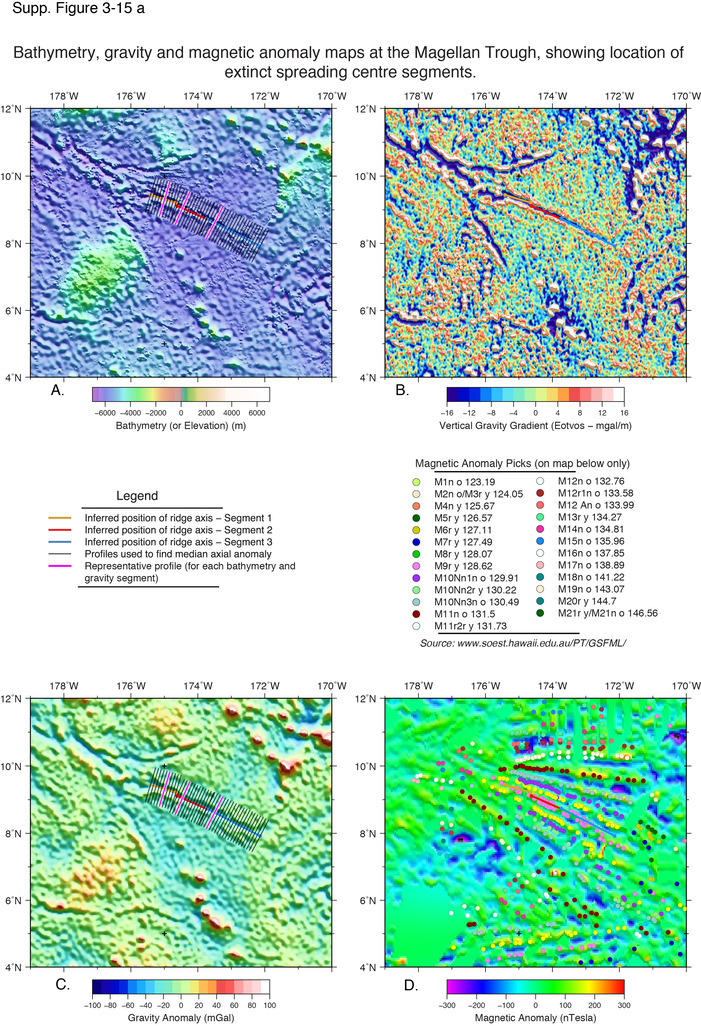| Ocean: | Pacific |
| Spreading center type: | Microplate spreading ridge |
| Time of cessation: | Ca. 125 Ma, chron M9 (Tamaki and Larson, 1988) |
Despite its Cretaceous age, the Magellan extinct ridge features a well-defined bathymetric trough that is bounded by symmetric magnetic anomalies that young toward the trough (Tamaki et al. 1979; Tamaki and Larson, 1988). This short-lived, fanning microplate spreading-centre is believed by Tamaki and Larson 1988 to have formed roughly simultaneously with another oppositely-oriented fanned ridge to the north, with two active spreading centres on opposite sides of the rectangular shaped plate and transforms on the other sides.
The microplate was active for approximately 9 m.y., from M12 until M9, during a reorganization of the Pacific-Farallon-Phoenix plates (Tamaki and Larson, 1988). Tamaki et al. (1979) note that the magnetic anomalies across the microplate vary markedly in amplitude, decreasing fourfold to the west and that the north and south flanks of the centre had different poles of rotation. The rotation rate of the fanning ridge is also seen as exceptional, being as high as 4° per m.y,, far above that reported for other microplates.
The Magellan Trough is considered as a well-defined extinct spreading ridge and as a type example of an extinct microplate spreading centre.
Tamaki, K. and Larson, R.L., 1988. The Mesozoic tectonic history of the Magellan Microplate in the Western Central Pacific. Journal of Geophysical Research, 93(B4), pp.2857–2874.
Tamaki, K., Joshima, M. and Larson, R.L., 1979. Remanent Early Cretaceous spreading center in the central Pacific basin. Journal of Geophysical Research, 84(B9), pp.4501–4510.


